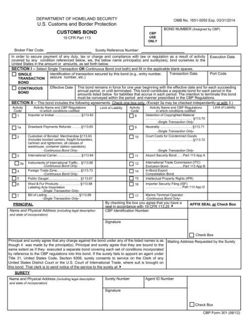What Is The Difference Between A Bonded And Non-Bonded U.S. Highway Carrier (DIY Customs Consulting)
| This article is part of the Customs Compliance Guide |
The main differences between a non-bonded and a U.S. bonded highway carrier is where U.S. bound shipments can be released. A non-bonded carrier must release all shipments at the first point of entry in the United States. A bonded carrier is licensed to move freight through the U.S. or across the U.S. without having to pay duties, taxes and/or fees on those goods during that specific portion of their transportation and must post financial security with U.S. CBP. This includes the following:
- Transiting through the U.S. (that is, using U.S. as a corridor, for example Canada through the U.S. back to Canada)
- Moving goods inland to a bonded warehouse
- Applying to trusted trader programs, such as the Customs Trade Partnership Against Terrorism (CTPAT) and the Free and Secure Trade (FAST) programs.
Although registering as a non-bonded highway carrier is a much simpler process, registering to become a bonded U.S. highway carrier to take advantage of the points mentioned above is much more involved. Please click here to learn the process of registering to become a U.S. bonded highway carrier.
As mentioned previously, there are limitations as a non-bonded highway carrier, as the non-bonded carrier can only take shipments that must be released at the first U.S. port of entry and cannot bring commercial goods to be released inland or transit through the U.S. However, there are instances when a non-bonded highway carrier can bring commercial loads in-bond, such as with a Single Entry Bond.
Single Entry Bonds can be obtained by either U.S. CBP or a Customs Broker, which gives a single entry bond authorization by either posting security with U.S. CBP using cash or a certified cheque or through a Customs Broker that offers this service. Click here to learn more about single entry bonds.
References
CBP Form 301 and Single Entry Bonds - https://www.cbp.gov/sites/default/files/assets/documents/2022-Dec/cbp-form-0301.pdf
How to become a U.S. bonded highway carrier - https://www.borderconnect.com/customs-consulting/diy-consulting.htm#usQ9

